A Blacktailed Rattlesnake hiding deep in a cave on an extremely hot day. During the heat of summer, rattlesnakes like this one may stay hidden away from lethal temperatures, staying in one spot or coming just outside the entrance after dark.
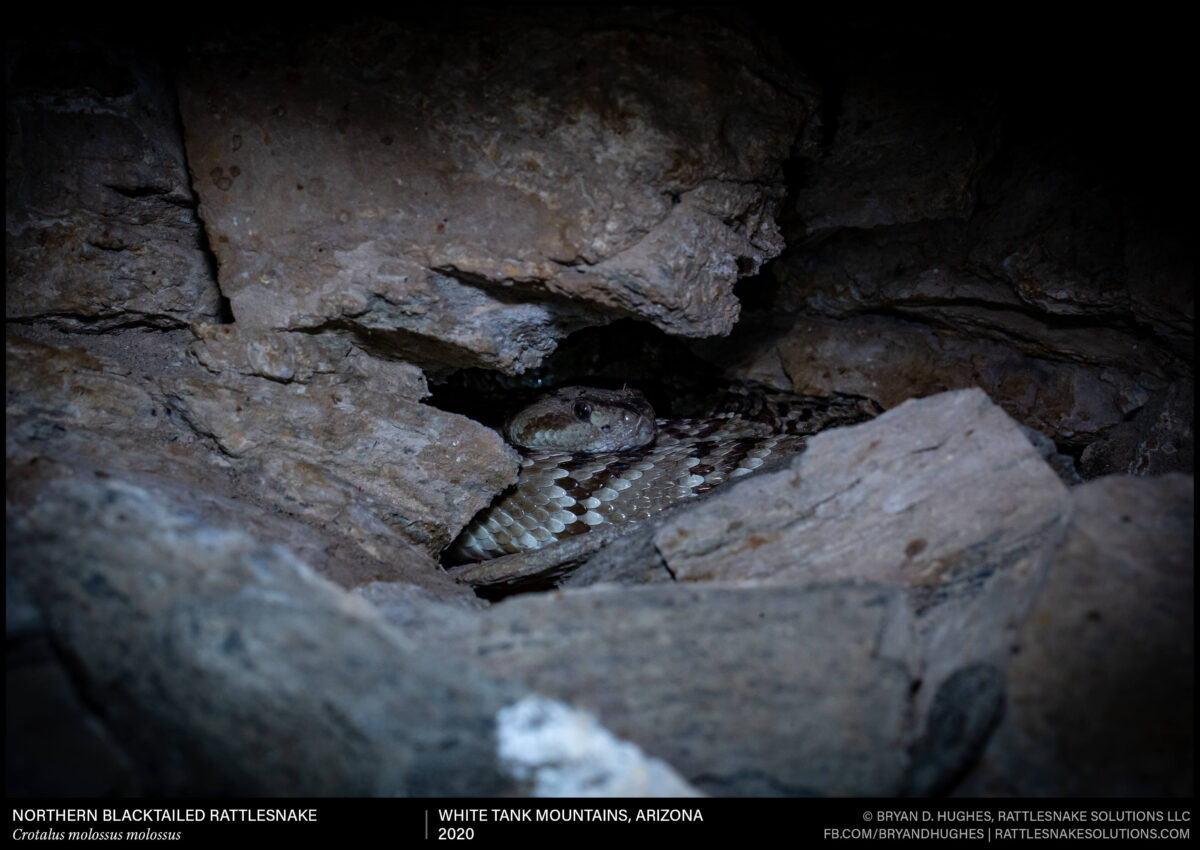
A Blacktailed Rattlesnake hiding deep in a cave on an extremely hot day. During the heat of summer, rattlesnakes like this one may stay hidden away from lethal temperatures, staying in one spot or coming just outside the entrance after dark.

An Arizona Ridgenosed Rattlesnake in southeastern Arizona. These small rattlesnakes are common where they are found, but even ranchers born and raised in the area usually have no idea it exists. That’s thanks, in part, to its nearly perfect camouflage, making it about invisible in oak leaf litter and bunchgrass.
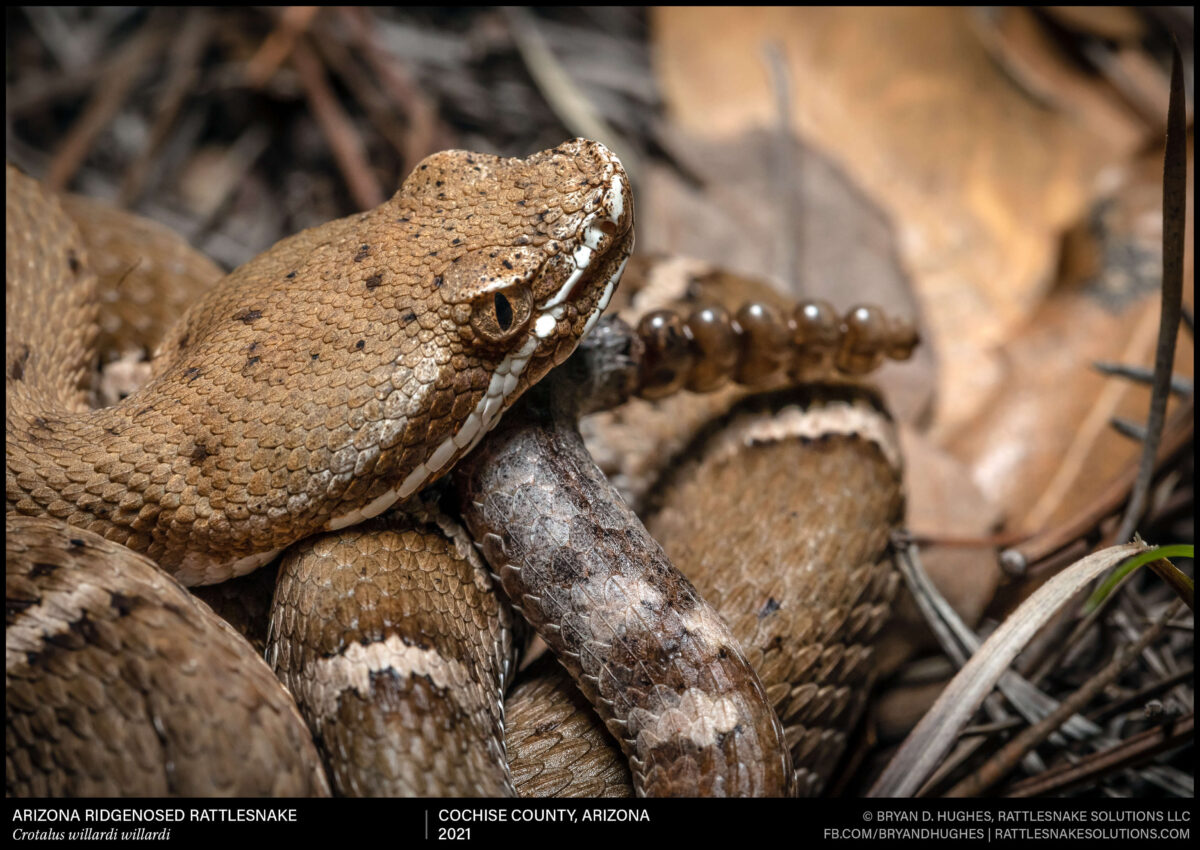
Three of the half dozen or so Western Diamondback Rattlesnakes that occupy this den each winter. These snakes spend a lot of time during the early spring basking and making short movements to thermoregulate and for social reasons, where they are vulnerable to predators and other threats.
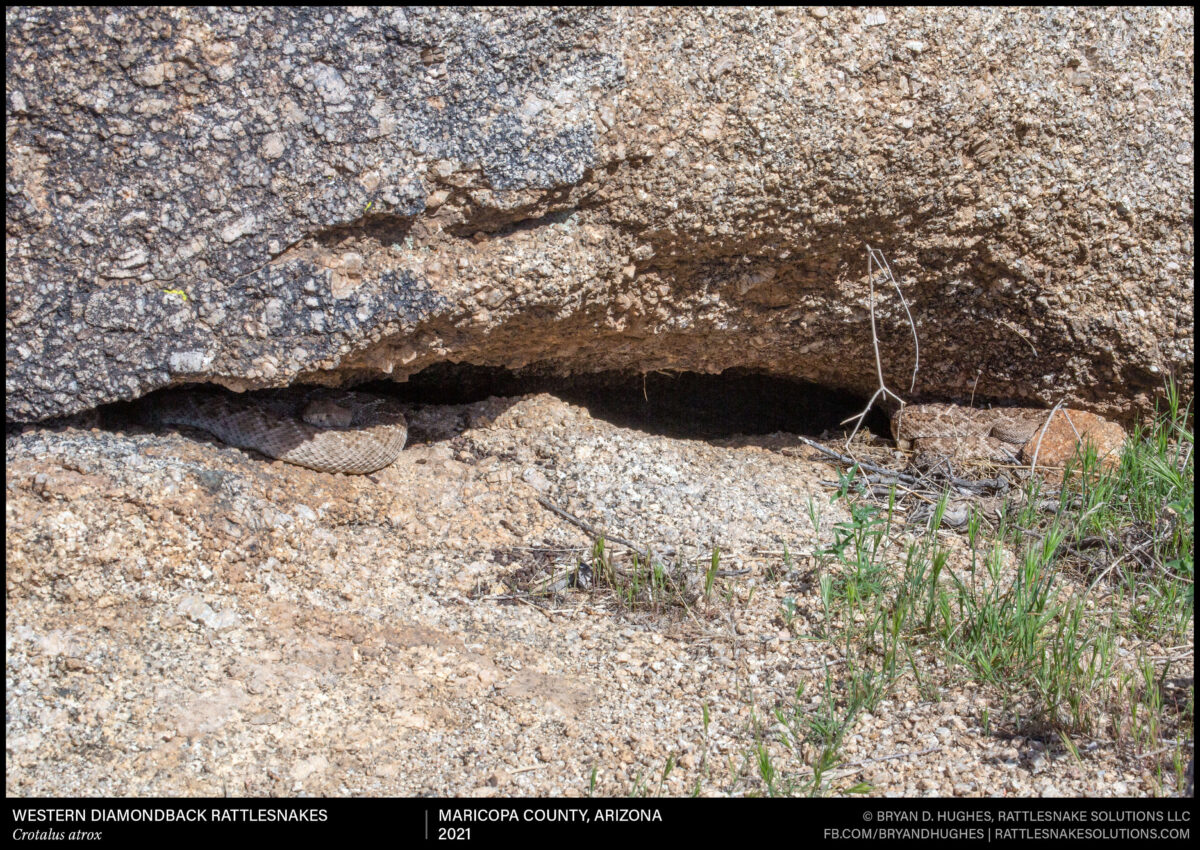
The tiny face of a Sonoran Coralsnake. These tiny snakes are highly venomous, but reluctant to bite. Avoiding this is simple: don’t make the stupid decision to pick one up. If you can do that, there is no danger from these little snakes.
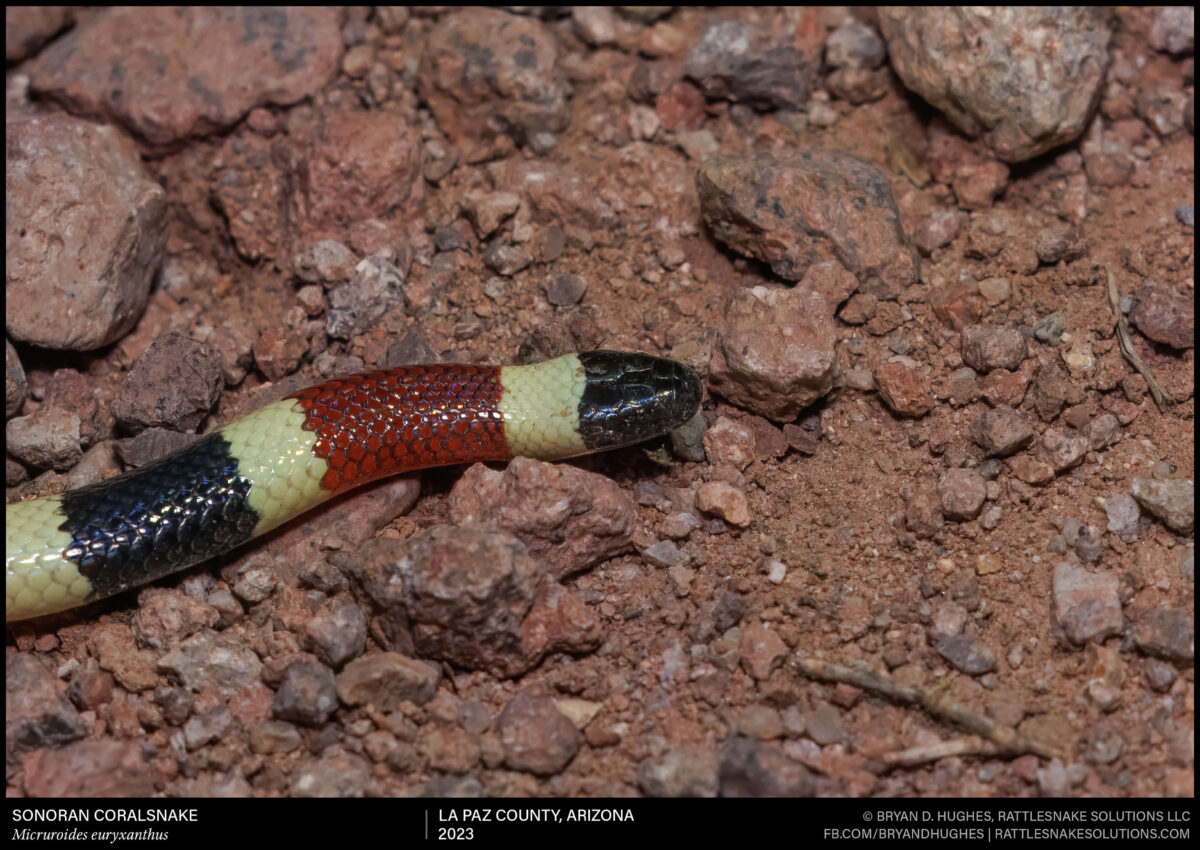
A Blacktailed Rattlesnake coiled in the grass in the Madrean woodlands of southeastern Arizona. These large, greenish rattlesnakes are a common sight for hikers and naturalists in the area.
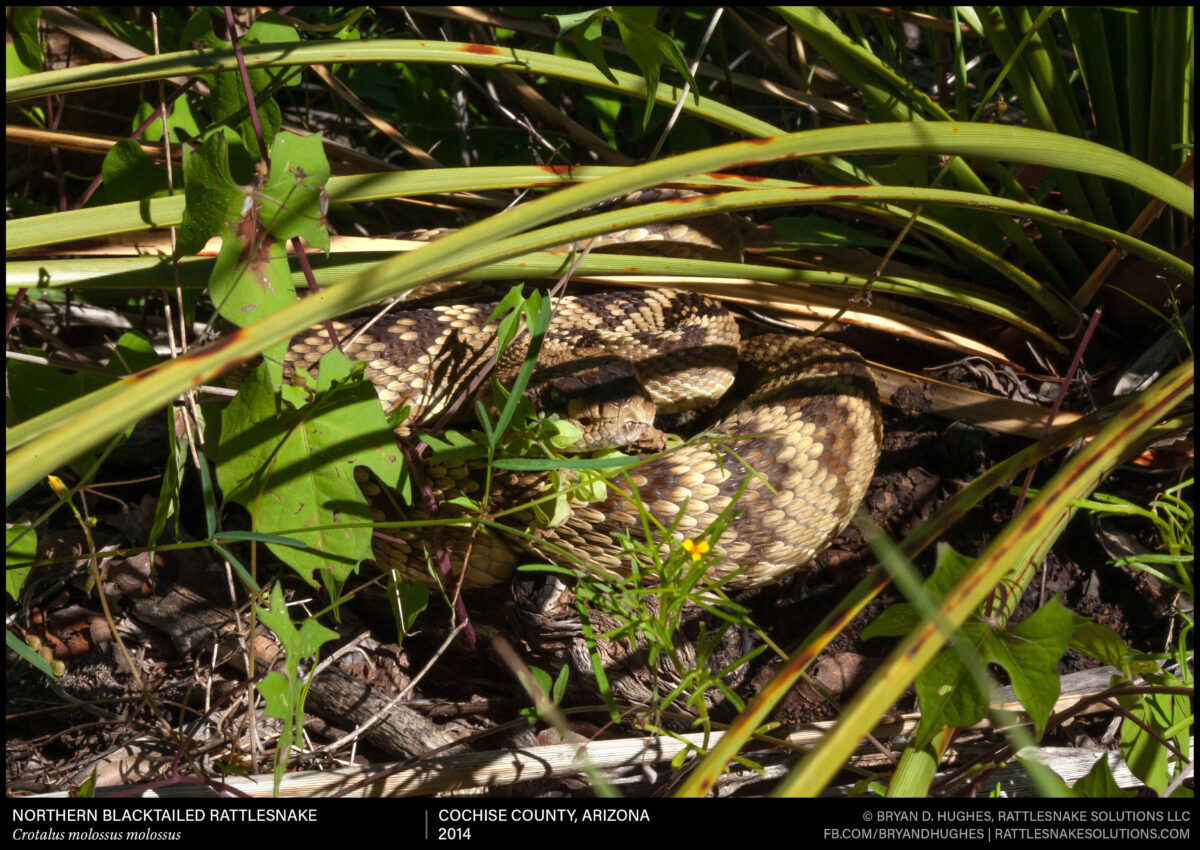
A Central American Eyelash Viper I found on a family vacation about a year ago to Costa Rica. I found none of the golden yellow version, but this minty green zipper patterned one was a welcome sight.
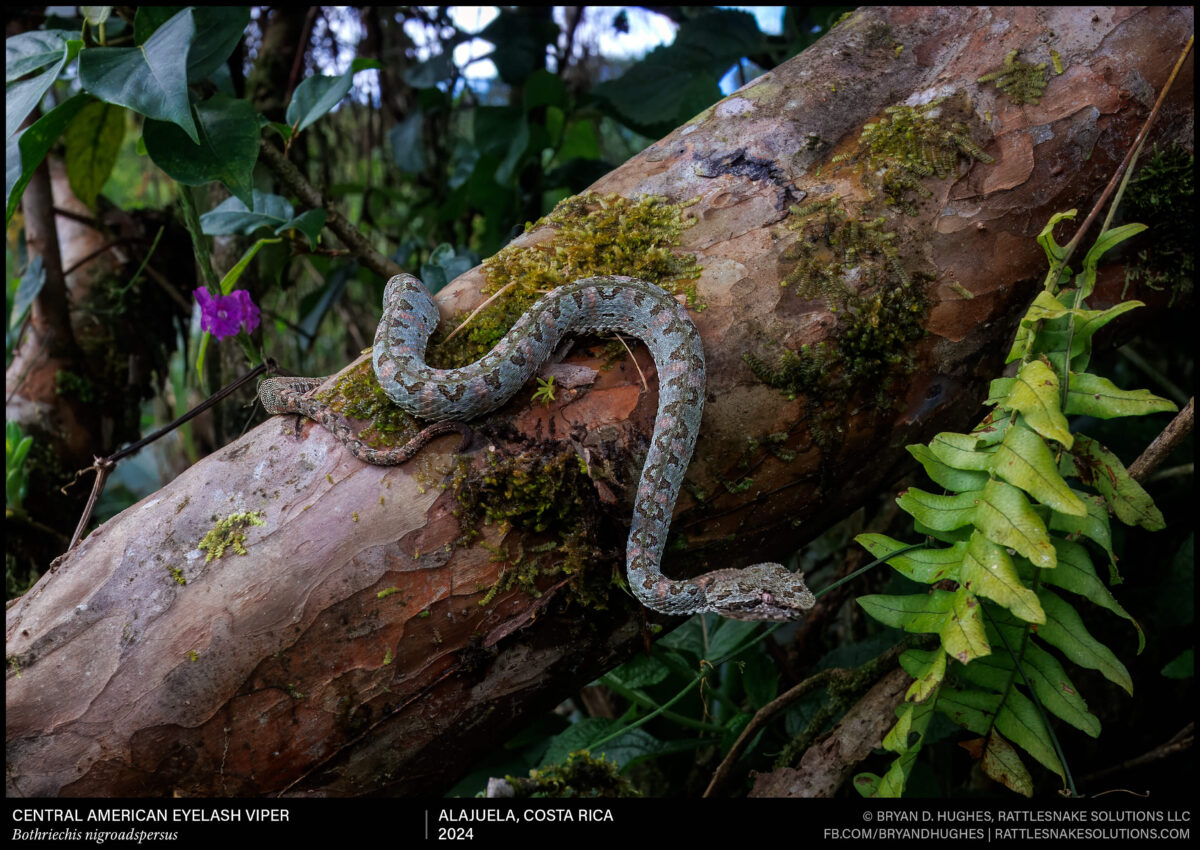
A Sonoran Lyresnake found in central Arizona on a night hike.

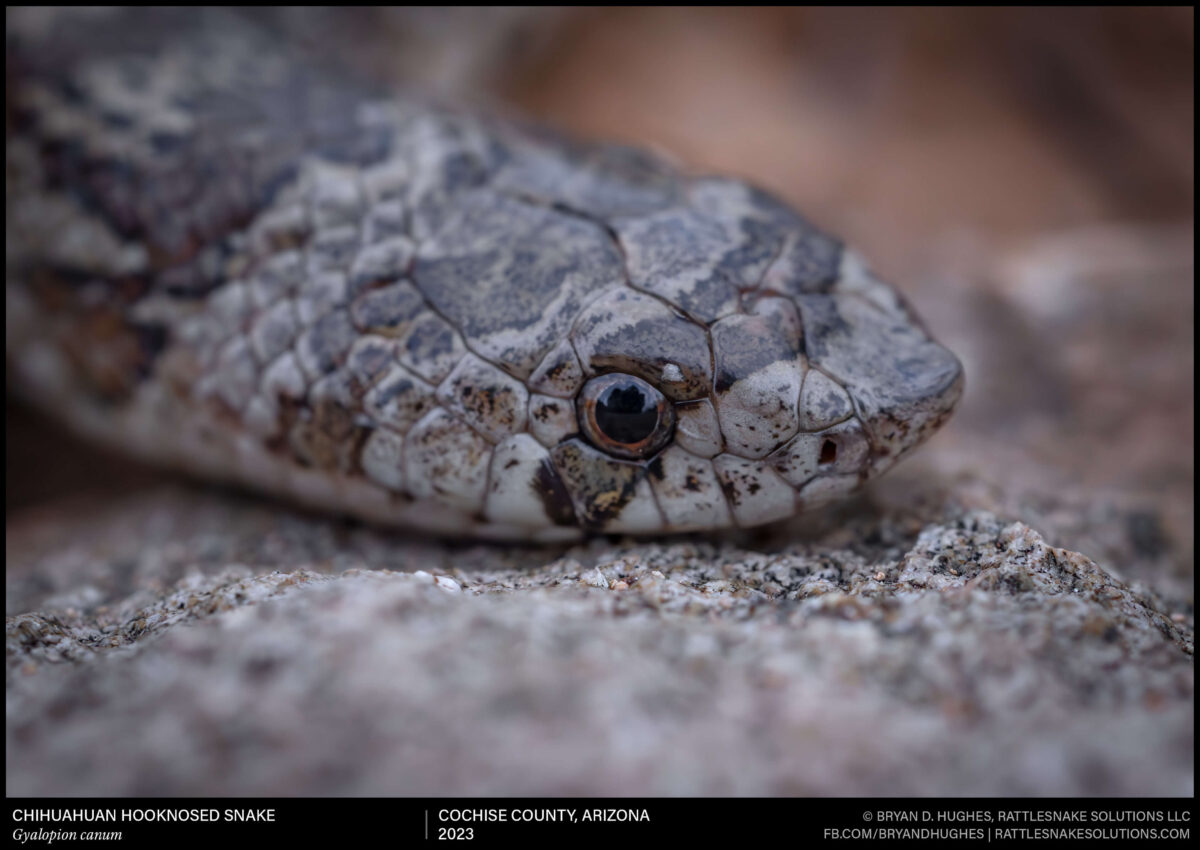
The face of a Chihuahuan Hook-nosed Snake. These are small eaters of invertebrates. The subtle scoop on the end of the nose is helpful for finding prey in the sandy, grassland soil where they live.
Hardy, L. M. (1976). Gyalopion, G. canum, G. quadrangularis (Unpublished manuscript). University of Texas. Retrieved from https://repositories.lib.utexas.edu/bitstreams/7425e5d2-4c40-4129-b736-a067e0a8d23b/download
Parga, V. M. (2018). Arthropod diets in Chihuahuan Desert snakes (Unpublished master’s thesis). University of Texas at El Paso.
Of the Midget Faded Rattlesnakes (Crotalus concolor) I’ve seen, which is a smaller number than I’d prefer, I think this is the best looking. Found in Wyoming on a snow-flurried June day.
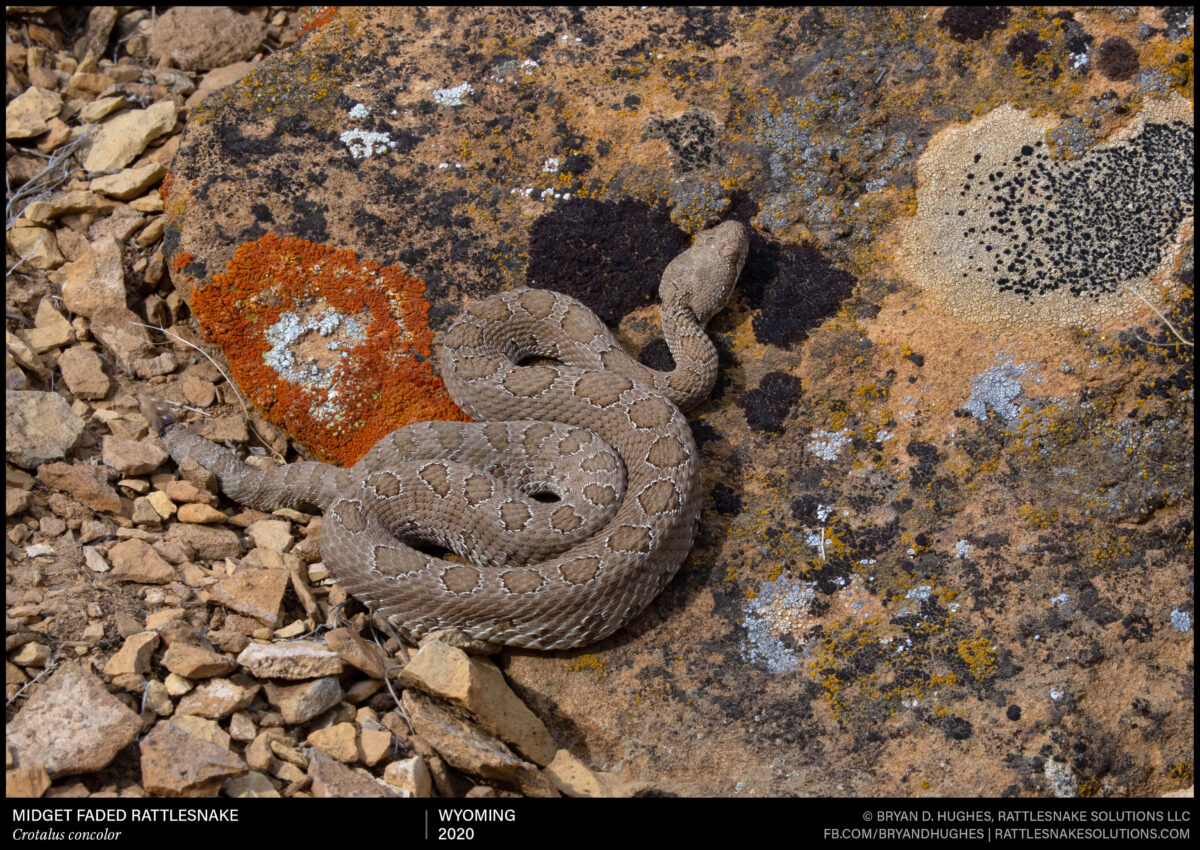
A Sonoran Gophersnake out moving across a roadway in the last sun of the day. Pinal County, AZ.

More about the Sonoran Gophersnake (Pituophis catenifer affinis.) https://rattlesnakesolutions.com/Gophersnake